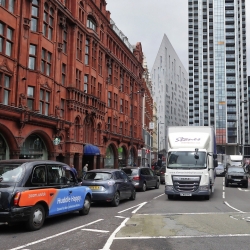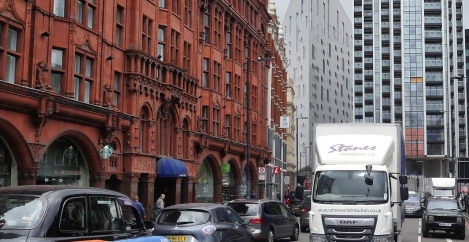February 4, 2020
Outdoor workers exposed to 15 percent more pollution than average
 Outdoor workers in the capital are exposed to 15 percent more pollution than the average Londoner, new research has claimed. Over six months, the Canairy app developed by King College London gathered data from two groups of Londoners, some mostly working in offices and others mostly working outside. Both groups were exposed to high levels of air pollution but those working outside fared worst, being exposed to air pollution breaching guidelines for NO2, particulate matter (PM2.5 and PM10) and ozone. Some maximum exposures were nearly two thirds higher than recommended World Health Organisation (WHO) limits.
Outdoor workers in the capital are exposed to 15 percent more pollution than the average Londoner, new research has claimed. Over six months, the Canairy app developed by King College London gathered data from two groups of Londoners, some mostly working in offices and others mostly working outside. Both groups were exposed to high levels of air pollution but those working outside fared worst, being exposed to air pollution breaching guidelines for NO2, particulate matter (PM2.5 and PM10) and ozone. Some maximum exposures were nearly two thirds higher than recommended World Health Organisation (WHO) limits.
The free app was developed as part of the British Safety Council’s Time to Breathe campaign, which was launched last year. It gathers data based on London’s air quality monitoring stations and gives each user a read-out of the air pollution they are exposed to at work. The WHO says that air pollution is now the world’s largest single environmental health risk and that reducing air pollution could save millions of lives.
The British Safety Council has called on the government to adopt the WHO guidelines in its new Environment Bill.
[perfectpullquote align=”right” bordertop=”false” cite=”” link=”” color=”” class=”” size=””]The first data release confirms that outdoor workers are being exposed to high levels of air pollution, with all the health risks that carries. [/perfectpullquote]
Commenting on the first set of findings since the app’s release, the Council’s head of campaigns, Matthew Holder, said: “The first data release confirms that outdoor workers are being exposed to high levels of air pollution, with all the health risks that carries. Canairy confirms what we also thought – if you work outside in a city or near a busy road, you are putting your health at risk. What is new is that we now have the technology for individual workers to record their exposure. With Canairy and other forms of measurement, we are building the evidence base that makes the case for change. As a first step, we must urgently adopt the WHO guidelines on PM2.5. But we also need investment in measurement so we can understand who is at risk and how people can limit their exposure to harmful air pollution.”
He added: “I am really pleased that since we launched this campaign in 2019, we have seen employers ready to take responsibility for protecting their workers from pollution. A new steering group has been established of leading construction and infrastructure companies to look at how we can mitigate the impact of air pollution on outdoor workers. But as well as employers doing their bit, we need national and local government to invest in measurement across the country so that apps like Canairy can give an accurate picture of the pollution workers are breathing in.”
In March 2020, the Time to Breathe campaign will be going to Manchester to highlight the limitations of air pollution monitoring outside London.













